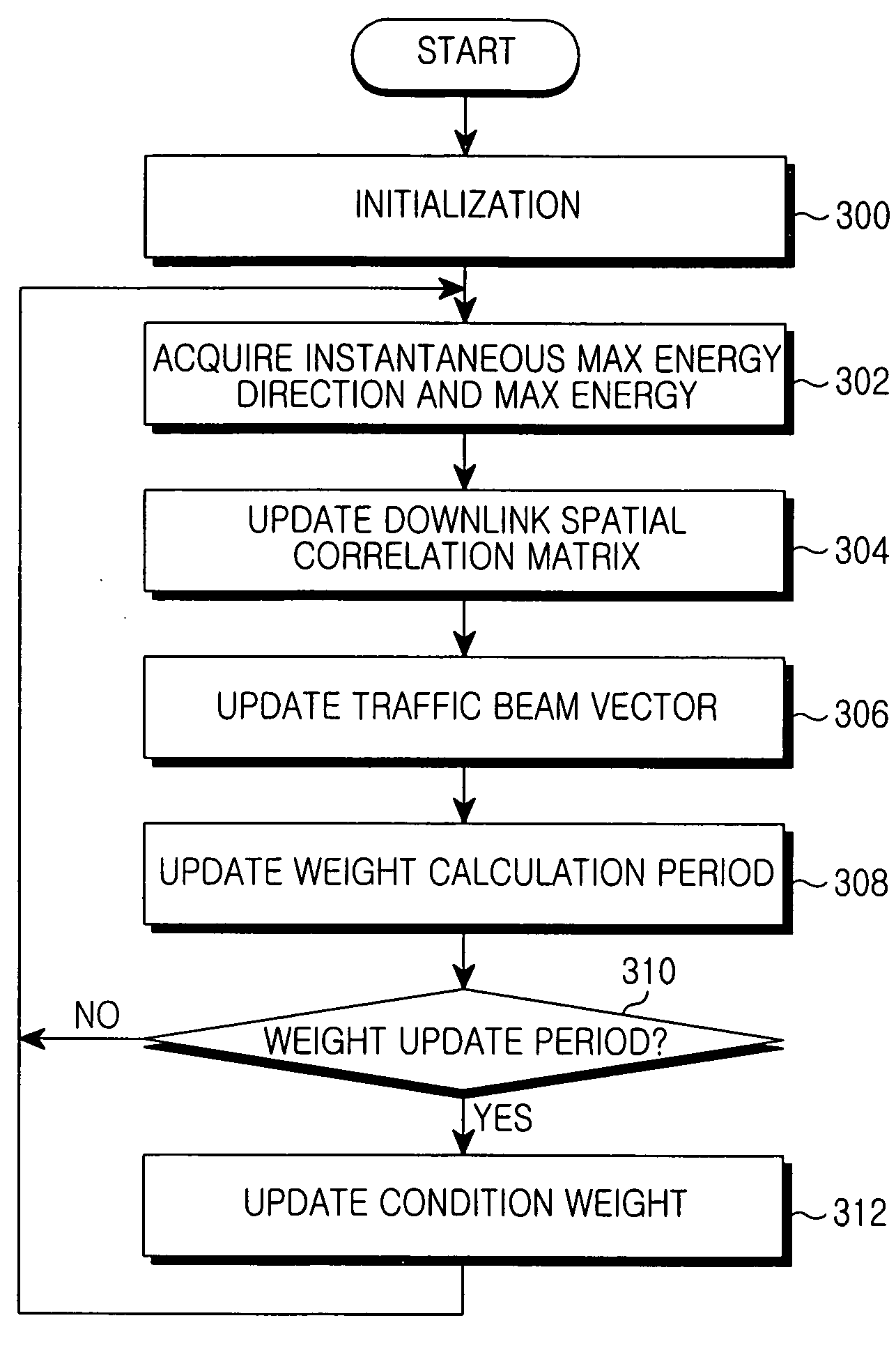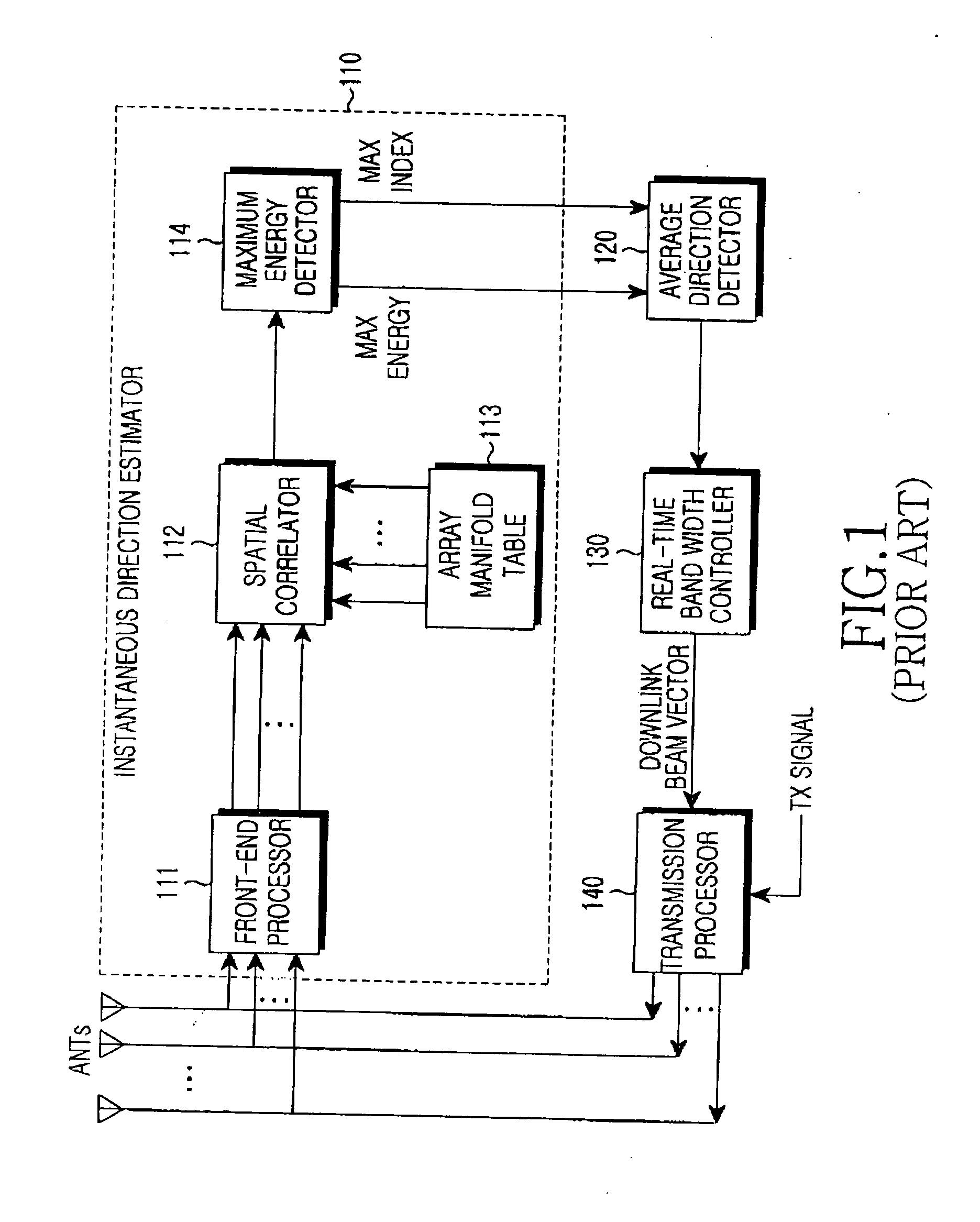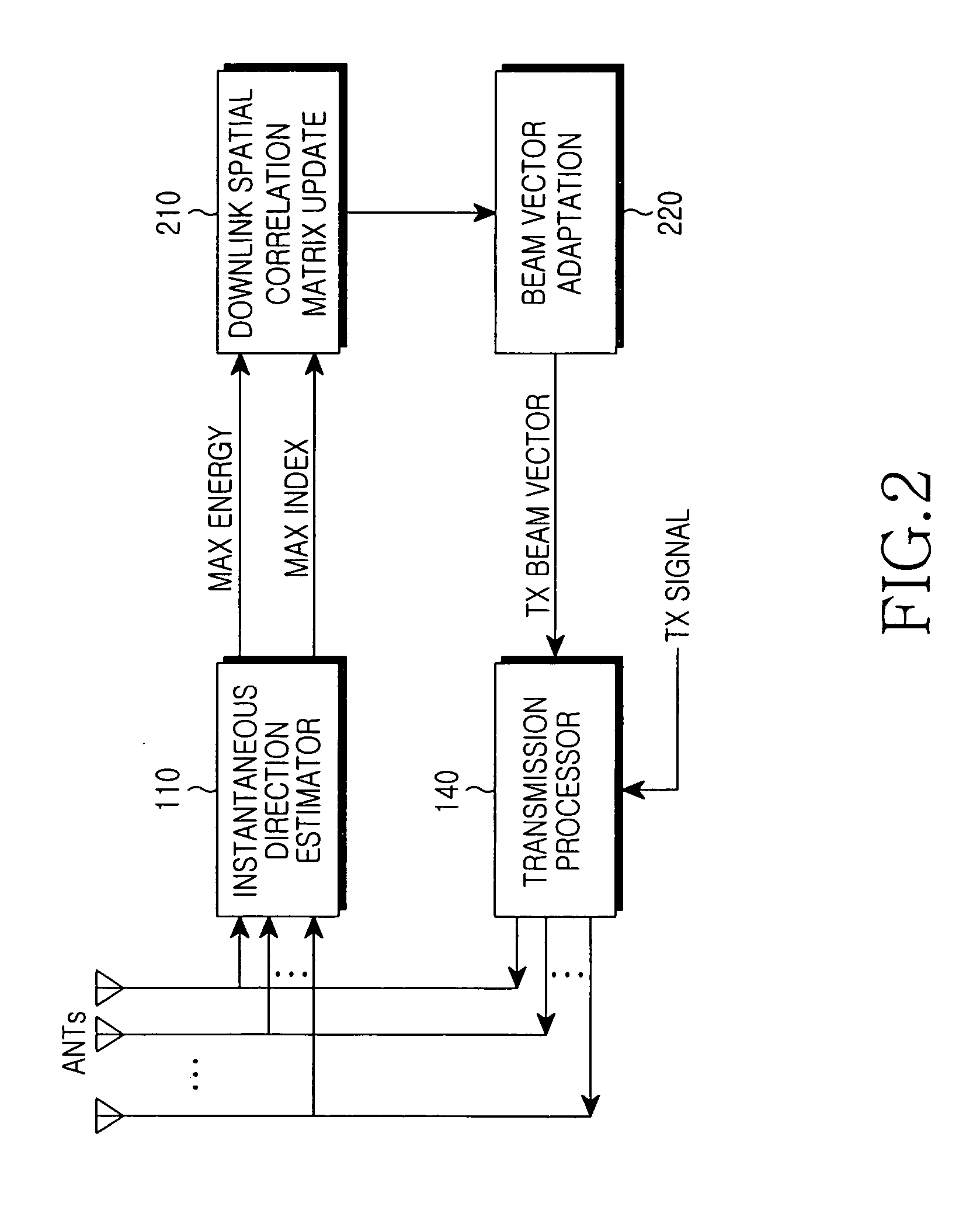Apparatus and method for forming downlink beam in a smart antenna system
a technology of smart antennas and antennas, applied in diversity/multi-antenna systems, transmission monitoring, spatial transmit diversity, etc., can solve problems such as limited beams, method performance degradation, and limited beams, and achieve the effect of reducing errors
- Summary
- Abstract
- Description
- Claims
- Application Information
AI Technical Summary
Benefits of technology
Problems solved by technology
Method used
Image
Examples
Embodiment Construction
[0027] An exemplary embodiment of the present invention will now be described in detail with reference to the annexed drawings. In the drawings, the same or similar elements are denoted by the same reference numerals even though they are depicted in different drawings. In the following description, a detailed description of known functions and configurations incorporated herein has been omitted for conciseness.
[0028] In the following description, embodiments of the present invention provide an apparatus and method for transmitting radio signals in a communication system using multiple antennas (or a smart antenna). The multiple antennas described below can be applied to all base station transceiver systems (BTSs) that form beams. Although embodiments of the present invention will be described with reference to a frequency division transmission / reception method that uses different transmission / reception frequencies, it can also be applied to a mobile communication system using a tim...
PUM
 Login to View More
Login to View More Abstract
Description
Claims
Application Information
 Login to View More
Login to View More - R&D
- Intellectual Property
- Life Sciences
- Materials
- Tech Scout
- Unparalleled Data Quality
- Higher Quality Content
- 60% Fewer Hallucinations
Browse by: Latest US Patents, China's latest patents, Technical Efficacy Thesaurus, Application Domain, Technology Topic, Popular Technical Reports.
© 2025 PatSnap. All rights reserved.Legal|Privacy policy|Modern Slavery Act Transparency Statement|Sitemap|About US| Contact US: help@patsnap.com



